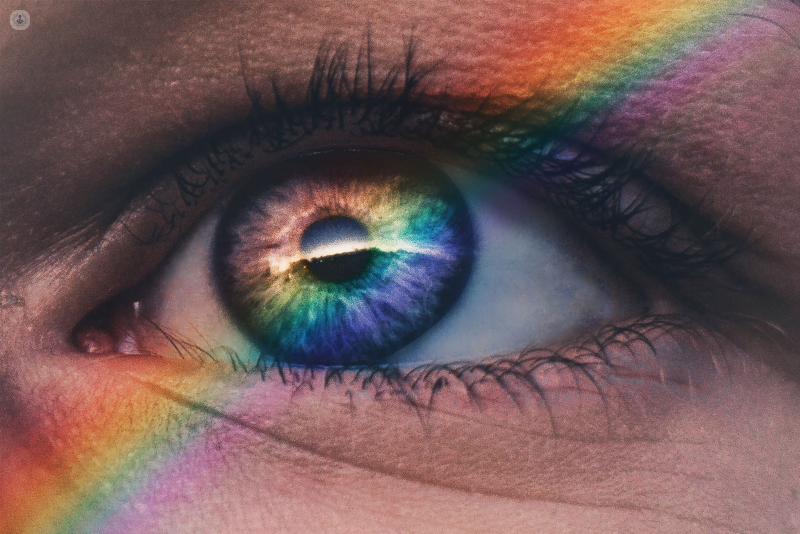Can you become colour blind later in life?
Written by:Although it’s unusual, it is possible to become colour blind later in life through different diseases or eye conditions. These diseases can damage the optic nerve or the retina of the eye and lead to acquired colour blindness, also known as acquired colour vision deficiency. Mr Praveen Patel, an internationally recognised ophthalmologist in London tells us more about this condition.

How common is it and who does it affect?
Acquired colour blindness - meaning colour blindness which people are not born with but appears later in life - is rare and most people with colour blindness are born with it.
Colour blindness can develop later in life and affect men and women equally.
What changes would someone notice?
Colour blindness can come on very gradually in some people and may be difficult to pick up if both eyes are affected. Sometimes people report that their vision appears washed-out or faded. Other people notice blurred vision with colours not appearing as bright or as accurately as they should.
What underlying conditions can cause acquired colour-blindness?
Acquired colour blindness can be associated with a range of different eye conditions. In patients over 50 years of age, a condition known as age-related macular degeneration (AMD) can cause symptoms of blurring and problems detecting colours accurately. In early forms of AMD, waste material builds up under the light-sensing cells of the retina (photoreceptors) and this can be associated with problems with vision in dim light, for example at dawn and dusk or when reading in poor lighting.
There are two types of advanced AMD known as wet and dry AMD which can sometimes be seen together in the same eye.
- Dry AMD - the light-detecting cells of the retina gradually die leading to loss of the central part of the patient's vision (the part of the vision we use for reading, driving or when recognising faces). Dry AMD can come on gradually and can get worse slowly over the years. Unfortunately, we don’t have effective treatments for dry AMD though doctors are looking to develop new treatments such as protecting the light-sensing cells from damage or replacing damaged cells with stem-cells. These treatments are still experimental and are not yet ready to be used in clinic patients.
- Wet AMD – this is the other form of late AMD. In wet AMD, fragile blood vessels grow into the retina damaging the light-sensing photoreceptor cells. This can happen over days or weeks and patients can suddenly develop vision related symptoms such as altered colour vision, distortion or blurred vision. Thankfully there are effective treatments for wet AMD but it’s important to see an eye doctor within a week of the start of symptoms to help plan out tests and treatment to prevent further loss of vision.
Other eye diseases can rarely cause altered colour vision such as diabetic eye disease or glaucoma. Diseases which affect the brain and optic nerve such as multiple sclerosis can also cause loss of colour vision.
When should I see an eye doctor?
It’s important to see an eye doctor if you develop problems with your colour vision or indeed other symptoms of altered vision such as blurred or distorted vision, flashing lights or floating dots in your vision.
It’s helpful to cover one eye up to see which eye has the problem. Seeing an eye doctor will help in diagnosing the problem and finding out if treatment is needed.
If you notice any problems with your vision, don’t hesitate to contact Mr Praveen Patel and book a consultation.


